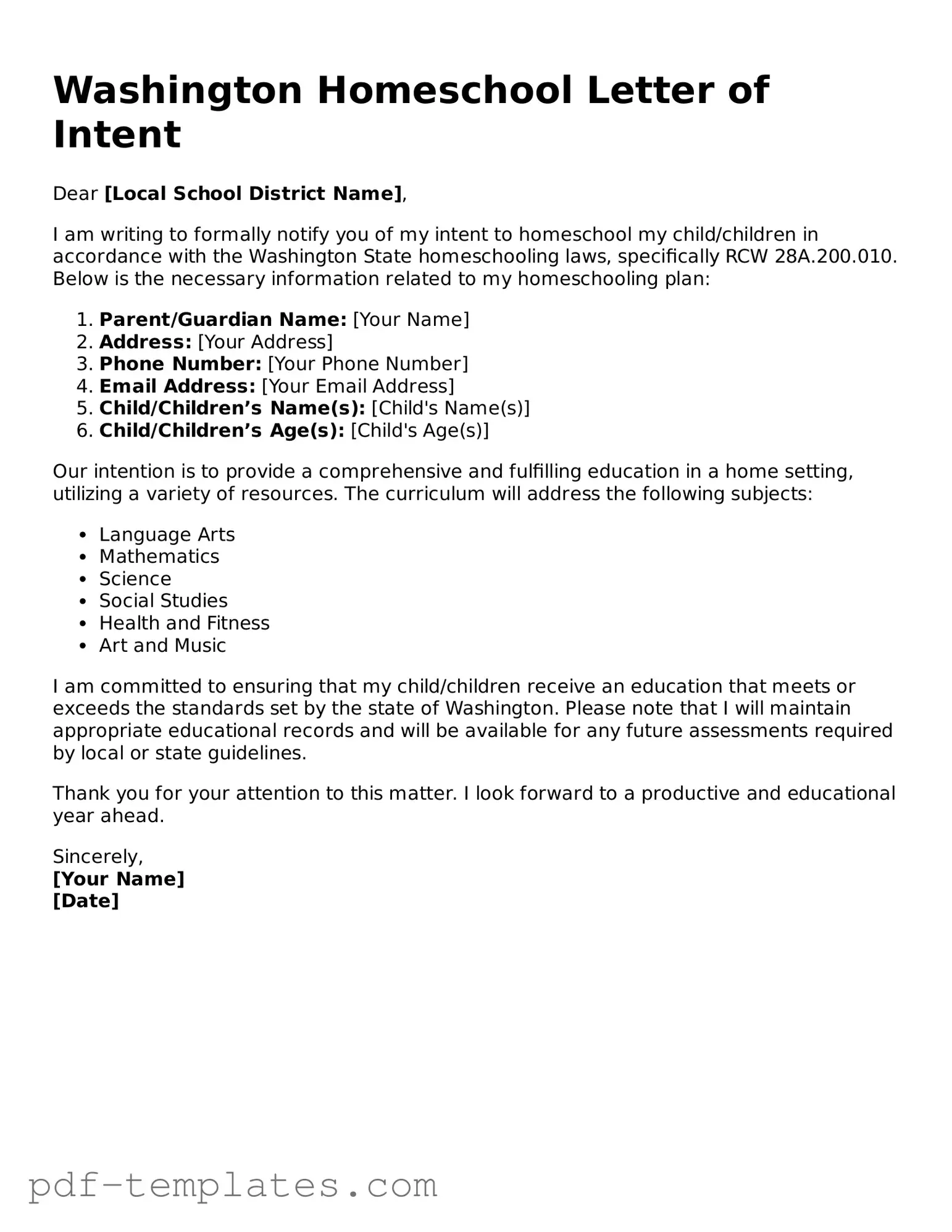The Washington Homeschool Letter of Intent form is similar to the Notice of Intent to Homeschool form used in several other states. This document serves as a formal notification to the state education department that a family intends to educate their children at home. Like Washington's form, it typically requires parents to provide basic information about their children and the educational curriculum they plan to use. This ensures that the state is aware of homeschooling activities and can monitor compliance with educational standards.
Another comparable document is the Homeschool Registration form found in states like Florida. This form also requires parents to declare their intent to homeschool. It may ask for details about the educational program and the qualifications of the parents. Both documents aim to establish a legal framework for homeschooling, ensuring that families are accountable for their children's education while maintaining state oversight.
In the realm of rental applications, the California Rental Application form stands out as an essential resource for landlords assessing potential tenants. This document ensures a thorough examination of applicants by gathering crucial details about their employment and rental history, as well as personal references, thus facilitating a reliable evaluation process. For those interested in exploring more about essential documents like this one, you can find comprehensive resources at All California Forms, which serve to streamline the application process while adhering to legal standards in California.
The Texas Homeschool Affidavit is another similar document. In Texas, parents must submit an affidavit to declare their intent to homeschool. This document is less detailed than the Washington form, as it primarily serves as a declaration rather than a comprehensive notice. However, both documents share the purpose of informing the state about the family's decision to homeschool, thus allowing for some level of regulation and oversight.
The California Private School Affidavit also bears similarities to the Washington Homeschool Letter of Intent. In California, parents must file an affidavit to establish their home as a private school. This document requires information about the school, including the number of students and the educational curriculum. While the focus is slightly different, both forms serve as a means for parents to formalize their educational choice and comply with state requirements.
The North Carolina Notice of Intent to Operate a Home School is another relevant document. This form must be submitted to the state to officially notify them of a family's decision to homeschool. It requires parents to provide their names, addresses, and the number of students being homeschooled. Like the Washington form, it is designed to keep the state informed and ensure that families follow the necessary legal guidelines.
In Georgia, the Declaration of Intent to Utilize Home Study Program is a similar document. Parents must submit this declaration to the state, indicating their intent to homeschool their children. The form requires basic information about the family and the educational program, mirroring the Washington form's goal of establishing a legal record of homeschooling activities.
The Ohio Homeschool Notification Form is another document that aligns with the Washington Homeschool Letter of Intent. Parents in Ohio must submit this notification to the local school district to inform them of their homeschooling plans. The form asks for details about the educational curriculum and the number of students, similar to the requirements in Washington. Both documents facilitate communication between homeschooling families and state authorities.
The New York Notice of Intent to Homeschool also shares similarities with the Washington form. In New York, parents must submit this notice to the local school district, outlining their intent to homeschool and providing information about their educational plan. Both documents emphasize the importance of transparency and accountability in the homeschooling process, ensuring that families adhere to state educational standards.
Finally, the Alaska Home School Notification Form is akin to the Washington Homeschool Letter of Intent. This form requires parents to notify the state of their intent to homeschool and provide information about their educational approach. Both documents serve the same fundamental purpose: to inform state authorities of homeschooling activities while establishing a framework for compliance with educational regulations.
